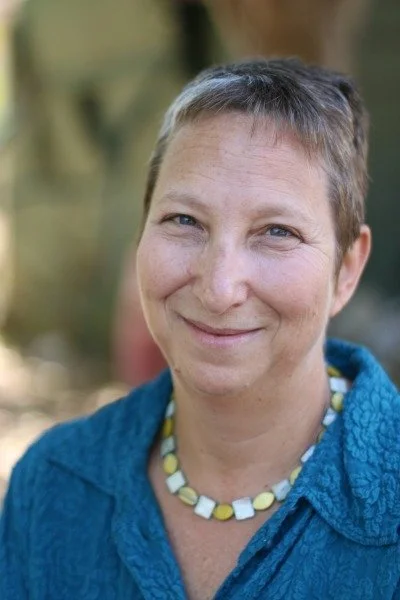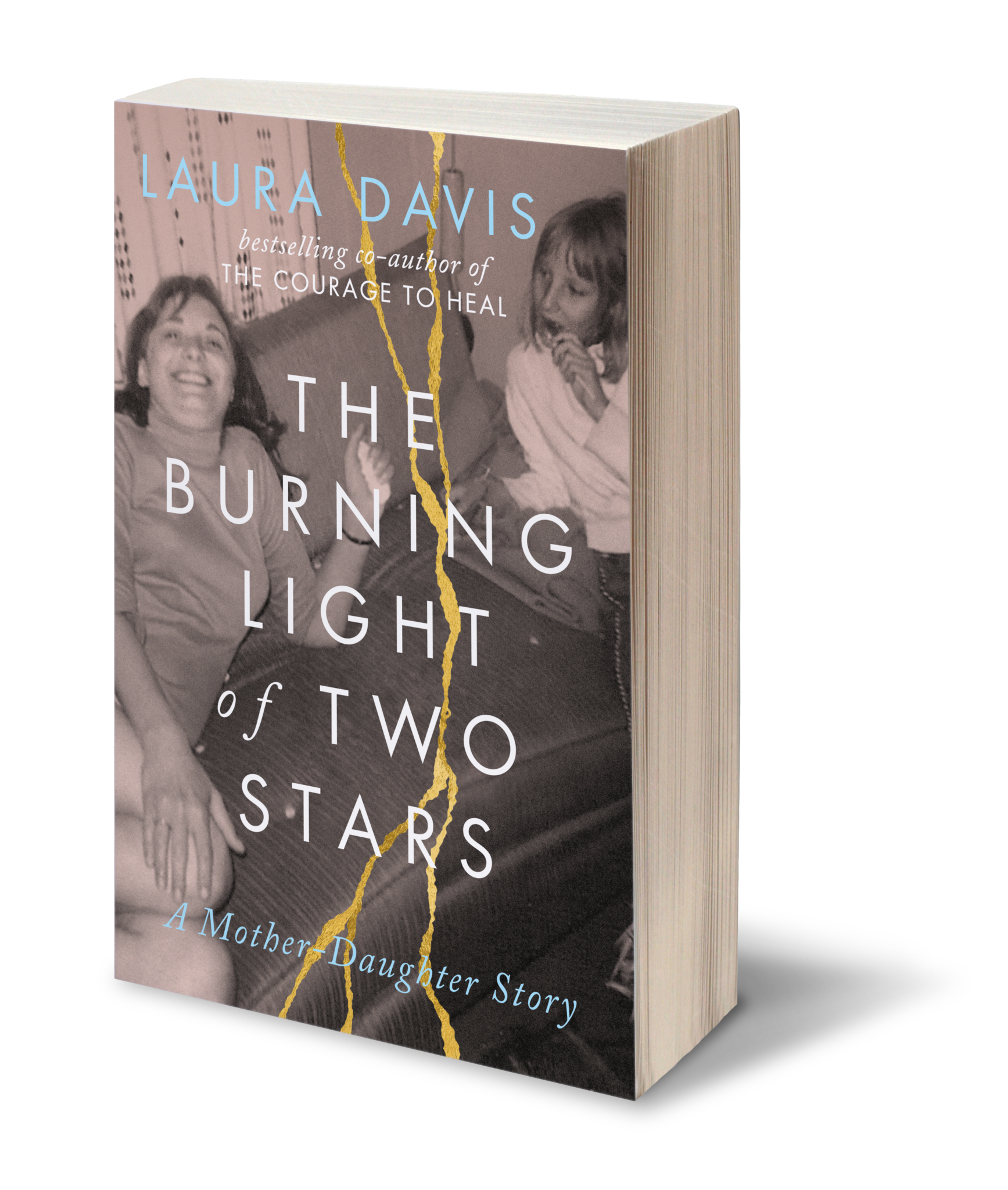A Conversation with Laura Davis
We are already a month into the new year!
I had the great pleasure of speaking with Laura Davis, a memoir teacher and author based in the Santa Cruz, California. She is the author of six nonfiction books, and recently published her debut memoir, The Burning Light of Two Stars, about her tumultuous relationship with her mother. It was fascinating to hear about her learning curve as as writer, putting what she knows and teaches into practice and her growth as a storyteller. We talked about everything from how to create a page turner to how to work with a shoddy memory. She also shared about how she reached the tipping point of finally being ready to write and share this story.
LAURA DAVIS is the author of six non-fiction books that change peoples' lives. The Courage to Heal has paved the way for hundreds of thousands of women and men to heal from the trauma of sexual abuse. Becoming the Parent You Want to Be, a rich resource guide co-authored with parenting expert Janis Keyser, helps parents develop a vision for the families they want to create. And I Thought We'd Never Speak Again teaches the skills of reconciliation and peace building to the world, one relationship at a time.
Her latest book, her first memoir: The Burning Light of Two Stars: A Mother-Daughter Story, tells the story of her dramatic and tumultuous relationship with her mother. It gives a no-holds-barred peek at the real woman behind the teacher, the facilitator, and the author.
KARIN GUTMAN: Given that you coach memoir writers, what was the learning curve in writing your own memoir?
LAURA DAVIS: When it came to writing my memoir, I understood how to get the raw material out, like how to do the deep excavation, the really painful kind of excavation. But then I had hundreds of little pieces that I'd written over the course of years. I knew the theme was this mother-daughter relationship. Some of them were really good—the individual piece might be polished and powerful—but I really had no idea how to make them into a book. I didn't know about storytelling, how to sustain a story over 360 pages. I had to learn what to leave in and what to cut out, which I think is really challenging in memoir.
The other thing I had to learn, that was really hard, was sequencing—like when to reveal things and when to conceal them. Part of that was learning how to create a page turner. That's my favorite feedback I get, people who said, “I picked up your book and I couldn't put it down.” I hear that every single day. I had no idea how to do that.
KARIN: Can you share more about that?
LAURA: Well, one of the final things I did at the very end of the 10 years of development—the very last edit, after I'd actually shopped the book around for a year and couldn't sell it—I shortened the chapters. Not the whole book, but a lot of it is very short chapters, which I think is good because everyone's attention span is so poor, you know, frazzled. Also, I interjected past, present, and future really fast. So, you're in one situation and then you're thrown into another situation. It doesn't work for every reader, but a lot of people really like that. It creates a very fast momentum.
And then, there was a lot of experimenting with placement. The worst moment between me and my mother—the scene where I tell her I've been sexually abused as a child, and she basically freaks out and attacks me—was a really pivotal scene and was the last straw between us when we became deeply estranged. I tried placing that scene in different places. I wanted to reveal it at the end. But then when people read it, they would say, “I don't understand why Laura is so mean to her mother?” Like, why is she being such a bitch?
Then I tried putting it right at the beginning and it was just way too emotionally intense. People would stop reading. So, I had to figure out how to sequence things. There are a lot of twists and turns, things that get revealed. It's like putting a puzzle together. It was a lot of trial and error.
I also had to figure out, What's the question that I want the reader to be asking?
KARIN: Every memoir needs a story question. What did you come up with?
LAURA: I think for me the biggest question was, “Can I open my heart to this person who betrayed me in the past?” We had reconciled to some degree before she moved out here, but I think our reconciliation was successful because there was a 3,000-mile buffer between us. Suddenly, she was in my town and she had dementia and I got triggered all the time by her behavior.
So: "Can I be the daughter she needs me to be or the daughter I want to be? Am I capable of taking care of her until the end of her life? Can I actually follow through and do this thing?"
Also, "Could I open my heart?" I could go through the motions of being a good daughter. I could do all the activities. I could do the research. I could drive her to the doctor's appointments.
The other thing that was super hard is, I have a really shitty memory. I was dissociative as a child because of being a trauma survivor.
KARIN: How did you navigate that?
LAURA: Well, first I discovered that the more I wrote about something, the more I remembered. So by free-writing, I found that if I really went deep and followed a thread, more memories would come back. I often use the prompt, “I don't remember.” I don't remember this… I don't remember that… and then suddenly, but I do remember this.
One my favorite scenes in the book takes place in a car. My mother and I are in a car together. I knew it was a really critical scene because of the things she talked about for the first time on this car ride. But I had no idea when the car ride was, where it was, where we were going. I just didn't remember anything about it except the conversation. But I did remember that it was pouring rain, and that it was a very long drive, and that the windows were closed. She was chain smoking. So, I built the whole scene around smoking in the rain.
KARIN: That was all you needed, right?
LAURA: It was super satisfying and it's a really good scene. So, it was learning how to work with the things that I did know.
I wrote, “I don't know” at the beginning, like, “I don't know where we were going.” I only figured out it had to be around this time because there were no car seats in the back. I didn't have children yet. If it was too far back, we weren't speaking. It had to be this certain kind of like suppositional writing. I did a lot of that.
And then there were certain scenes I would have liked to have written, but there was just no way to get any traction, and I had to find a different scene that would do the same work.
KARIN: It sounds like you were working on the book for a long time. Did you know the ending?
LAURA: I knew what the last scene would be. But I had to tell myself I wasn't going to publish it for nine out of the 10 years. I had too much history with certain people in my family who had already kicked me out of the family for writing The Courage to Heal when I was 31. I had already spent more than 20 years reconciling those relationships. The idea that I was going to lose those people all over again was just so devastating to me. I hadn't published anything in 19 years because this is the story I wanted to write, and I just felt like it was taboo. I finally got to the point of, I can't not write anymore. I was taking care of my mother, and I knew I needed to write it. And then she died, and it was like, Okay, I really need to write it. But maybe this is just a great project.
KARIN: At what point were you ready to put those relationships at risk to share this story?
LAURA: I think it was a few things. One is that I am an author, and that I really wanted to publish again. I didn't want to go for the rest of my life not publishing, and this was the story I had been given. I felt like if I didn't do this story, I wasn't going to have any other stories. We have a few core stories that are ours to tell, and this clearly was mine.
I couldn't have written it before. But if I had tried to write it before, it would have been a really different book. I'm 65 years old. I needed to be this age, this stage of life. A grandmother, a mother, you know, as seasoned as I am as a human being to be able to touch into the depth of the story in the way that I feel I have. I needed a lot of time after my mother's death to process the relationship in a different kind of way. My relationship to her is still changing. She's been dead for seven years. It's still evolving. If I was to write this in 10 years, it would be a different book again. But I needed that kind of time to have that vaster perspective, more like out in the universe looking at the story instead of at these two personalities. It's looking at her whole history, the epigenetics of trauma in our family, and just so many other things.
KARIN: I’ve noticed a lot of mother-daughter themes in my memoir-writing workshops. I'm imagining that your book is striking a chord with many people. You are probably giving a lot of people hope.
LAURA: I think it does. That's what I'm hearing from people. People are saying things like, “I picked up the phone and called my mother for the first time in 18 years,” or “I've had this box of letters from my mother sitting in the garage for the last three decades. I pulled them out and I'm going to write about them.”
KARIN: You can't get better feedback than that. That's amazing.
Buy the book
To learn more about Laura Davis visit her site.
See all interviews




